Author: Steve Thanos
Nearly every style of beer is known for possessing some level of bitterness to balance out malt sweetness, and this primarily comes from the isomerization of alpha acids that occurs when hops are added to the boiling wort. Once the boil is complete, brewers aim to transfer clean wort to the fermenter, hence many rely on some form of hop filtration, a common option being fabric bags.
A popular material used for hop filter bags is muslin, a lightweight and flexible cotton fabric with a relatively loose weave that allows wort to easily flow through. Given its absorbent quality, some believe using muslin hop bags can reduce overall hop character in beer, which is of particular concern when making IPA. For this reason, many brewers opt for bags made of polyester, which in addition to being more durable and less stretchy than muslin, is almost completely non-absorbent.
I’ve used both muslin and polyester bags extensively in my brewing, usually going with whatever is most readily available when my wort reaches a boil. While I can’t say I’ve noticed either as being better or worse than the other, I was curious if the different materials might have a perceptible impact on a hoppy IPA and designed an xBmt to test it out.
| PURPOSE |
To evaluate the differences between an American IPA where the kettle hops were filtered with a muslin bag and one where the kettle hops were filtered with a polyester bag.
| METHODS |
For this xBmt, I went with my tried-and-true house IPA recipe.
Henceforth
Recipe Details
| Batch Size | Boil Time | IBU | SRM | Est. OG | Est. FG | ABV |
|---|---|---|---|---|---|---|
| 5.5 gal | 60 min | 65.8 | 8.9 SRM | 1.06 | 1.013 | 6.17 % |
| Actuals | 1.06 | 1.013 | 6.17 % | |||
Fermentables
| Name | Amount | % |
|---|---|---|
| Ye Olde Pale Ale | 10 lbs | 83.33 |
| Munich | 1.001 lbs | 8.34 |
| Caramel Malt 40L | 1 lbs | 8.33 |
Hops
| Name | Amount | Time | Use | Form | Alpha % |
|---|---|---|---|---|---|
| Columbus/Tomahawk/Zeus (CTZ) | 10 g | 60 min | Boil | Pellet | 16.7 |
| Amarillo | 20 g | 10 min | Boil | Pellet | 6.4 |
| Citra | 20 g | 10 min | Boil | Pellet | 14.5 |
| Mosaic | 20 g | 10 min | Boil | Pellet | 11.6 |
| Amarillo | 28 g | 5 min | Boil | Pellet | 6.4 |
| Citra | 28 g | 5 min | Boil | Pellet | 14.5 |
| Mosaic | 28 g | 5 min | Boil | Pellet | 11.6 |
| Amarillo | 28 g | 5 days | Dry Hop | Pellet | 6.4 |
| Citra | 28 g | 5 days | Dry Hop | Pellet | 14.5 |
| Mosaic | 28 g | 5 days | Dry Hop | Pellet | 11.6 |
Yeast
| Name | Lab | Attenuation | Temperature |
|---|---|---|---|
| Joystick (A18) | Imperial Yeast | 77% | 32°F - 32°F |
Notes
| Water Profile: Ca 125 | Mg 20 | Na 8 | SO4 310 | Cl 56 |
Download
| Download this recipe's BeerXML file |
After collecting 2 sets of water and lighting the flame to get them heating up, I weighed out and milled the grains.
Once the water for each batch was adequately heated, I incorporated the grains then checked to make sure both were at the same target mash temperature.
While the mashes were resting, I prepared the kettle hop additions.
Once each 60 minute mash was complete, I sparged to collect the same pre-boil volume then as the worts were heating up, I prepared the different hop bags.
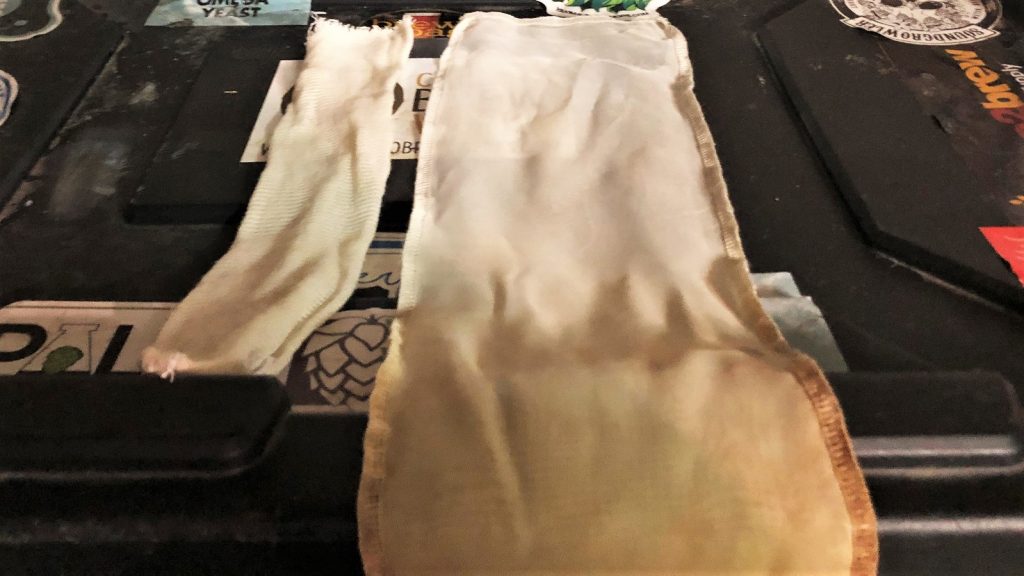
The worts were boiled for 60 minutes with hops added to either type bag at the times listed in the recipe, after which they were quickly chilled with my JaDeD Brewing Hydra IC.
Refractometer readings showed both worts achieved the same target OG
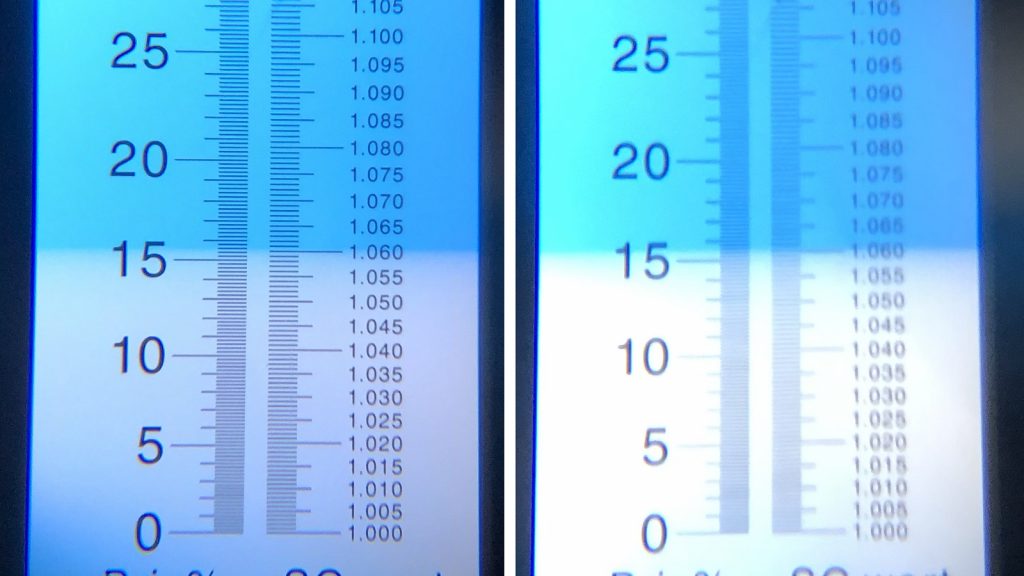
Next, I racked equal volumes of wort from each batch to sanitized fermented, which were placed in my chamber and left to finish chilling to my desired fermentation temperature of 66°F/19°C before I pitched a pouch of Imperial Yeast A18 Joystick into each.
With signs of fermentation activity absent 2 weeks later, I took hydrometer measurements showing the beers had reached the same target FG.
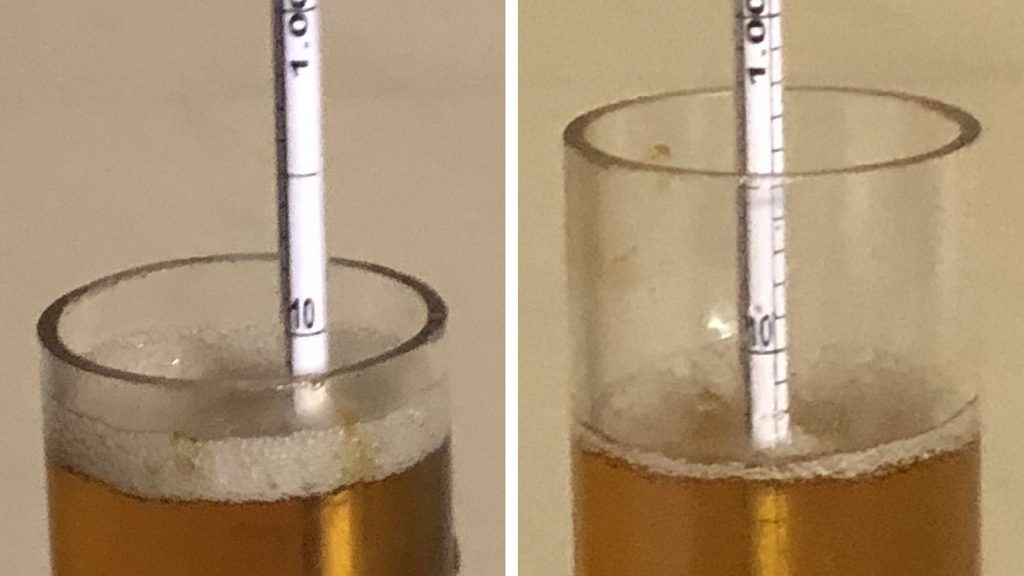
At this point, I transferred the beers to CO2 purged kegs and placed them in my keezer and burst carbonated them overnight before reducing the gas to serving pressure. After a week of conditioning, they were ready to serve to tasters for evaluaton.
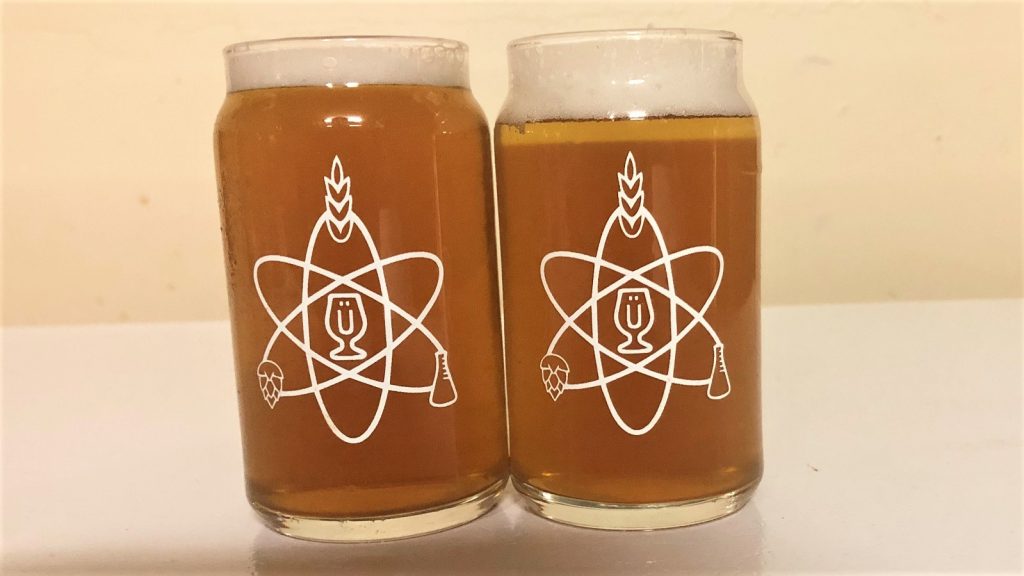
| RESULTS |
Cheers to Werk Force Brewing allowing me to collect data at their killer establishment. A total of 22 people of varying levels of experience participated in this xBmt. Each participant was served 2 samples of the beer where the kettle hops were filtered in a muslin bag and 1 sample of the beer where the kettle hops were filtered in a polyester bag in different colored opaque cups then asked to identify the unique sample. While 12 tasters (p<0.05) would have had to accurately identify the unique sample in order to reach statistical significance, only 7 did (p=0.64), indicating participants in this xBmt were unable to reliably distinguish an American IPA where the kettle hops were filtered in a muslin bag from one where a polyester bag was used to filter the kettle hops.
My Impressions: Out of the 5 semi-blind triangle tests I attempted, I correctly identified the odd-beer-out just once, which aligns with my subjective perception that these beers were identical in every way.
| DISCUSSION |
Filtering kettle hops during the boil is an easy way to ensure only the cleanest wort makes its way to the fermenter. While muslin bags are cheap and effective, they’re quite absorbent, which some believe reduces overall hop character. Polyester bags are a less absorbent and more durable, albeit slightly pricier, alternative that many brewers have incorporated into their routine. The fact tasters in this xBmt were unable to reliably distinguish an American IPA where the kettle hops were filtered in a muslin bag from one where a polyester bag was used instead indicates any differences were minor enough as to be largely imperceptible.
This xBmt was admittedly inspired by a previous one showing tasters could reliably tell apart a Pale Ale where the kettle hops were filtered in a polyester bag from one where the hops were added directly to the wort. While the lack of a perceived difference in the current xBmt seems to suggest muslin and polyester bags have the same impact when used for a hoppy IPA, it may very well be that hop bags have an effect of character, regardless of fabric type.
In the years I’ve been filtering my kettle hops, I’ve used both muslin and polyester bags, and I’ve not noticed any difference between them. The results of this xBmt confirm for me that my interchangeable use of both likely isn’t having a noticeable impact on my beer, and the fact I’m happy with what I’m brewing only buttresses this sentiment. That said, I look forward to comparing muslin bags to adding hops directly to the wort.
If you have any thoughts about this xBmt, please do not hesitate to share in the comments section below!
Support Brülosophy In Style!
All designs are available in various colors and sizes on Amazon!
Follow Brülosophy on:
FACEBOOK | TWITTER | INSTAGRAM
If you enjoy this stuff and feel compelled to support Brulosophy.com, please check out the Support page for details on how you can very easily do so. Thanks!


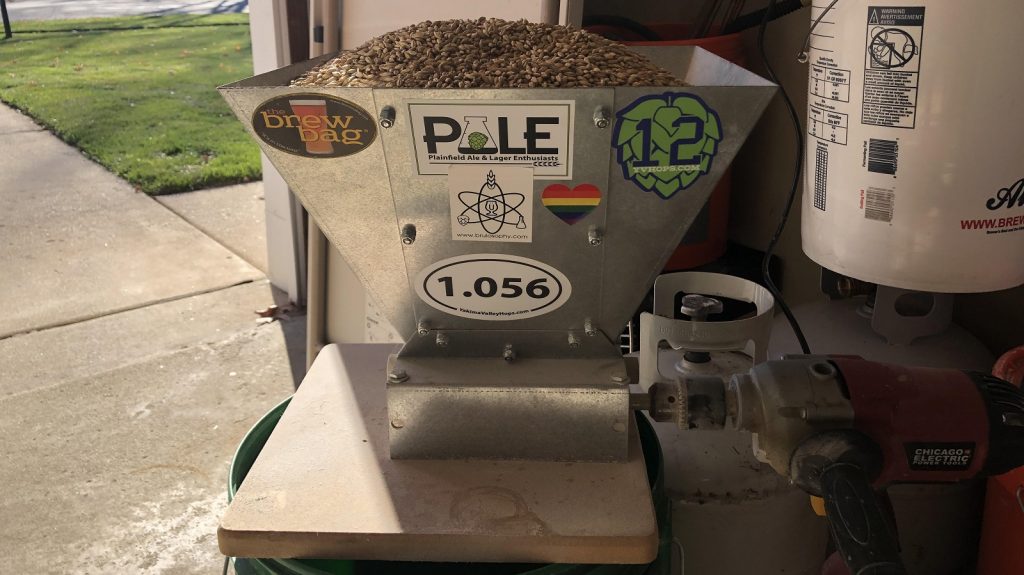
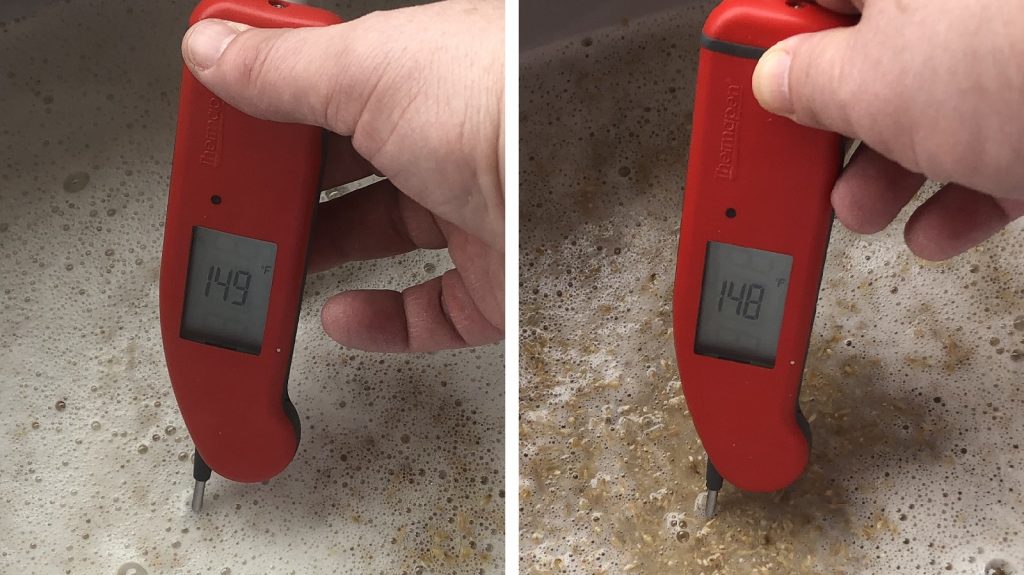

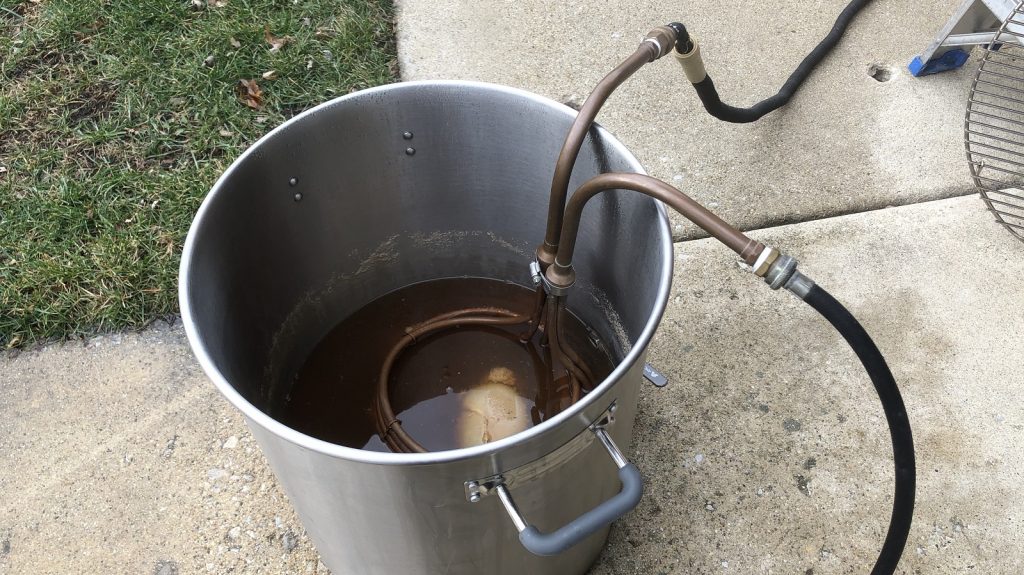
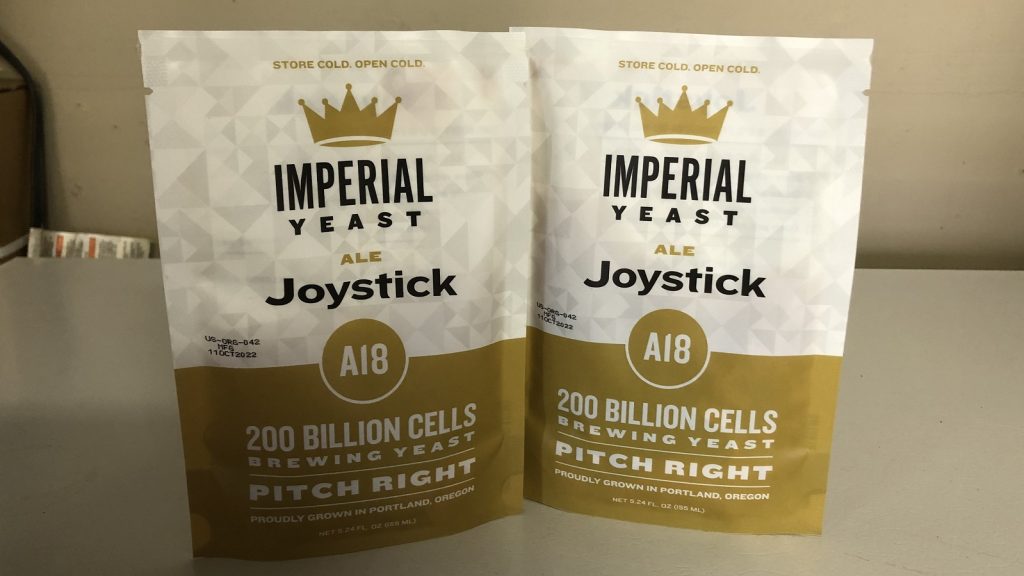











3 thoughts on “exBEERiment | Kettle Hops: Muslin vs. Polyester Filter Bags In An American IPA”
Happy new year to all !!
Happy New Year!
Looking forward to a squeezing vs. non-squeezing the hop bag experiment